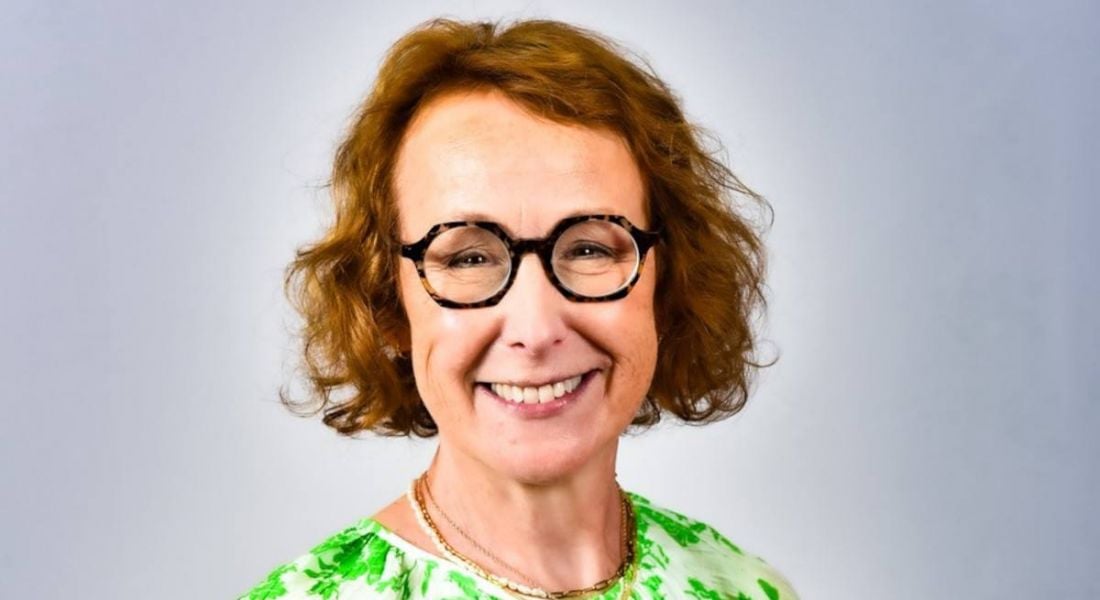Aon’s Katherine Conway discusses the ways that the company is supporting diversity and inclusion and the importance of employee resource groups.
Katherine Conway believes that when fostering diversity in a global company such as Aon, having many different and diverse perspectives only goes so far. She believes that teams need to be inclusive to ensure that different voices are heard, and that everyone needs to “feel able to speak up, contribute and challenge”.
“An inclusive culture that truly values difference is essential to harnessing creativity and innovation. Ultimately, we’re trying to create a culture and a workplace where everyone feels they belong – a sense of belonging really unlocks potential and performance.”
Conway is the global head of inclusion and cultural initiatives at Aon, where she works across 100 countries and “on behalf of 50,000 colleagues”.
She says her role is to ensure that all of her colleagues understand that they are all responsible for building an inclusive culture at the company. “We aim to deliver an experience for our colleagues which helps them be more connected, more valued and more relevant, so that they can achieve their full professional potential.”
What are some of the biggest trends and challenges you’re seeing in the diversity and inclusion space right now?
As well as the evergreen challenges of building diverse representation across all levels, I’m seeing more demand for firms to offer increased education and support around life stages such as fertility, family support and menopause. Organisations are getting more comfortable with talking about sensitive topics that once might have been stigmatised and recognising that their employees require policies and approaches that support them in a number of different areas. An example of this is mental health, which is now an everyday conversation whereas tackling the topic of mental wellbeing was unheard of 10 years ago. More openness and flexibility around work patterns and working styles are helping employees be more productive and resilient.
Another area of focus for leaders in inclusion and diversity is disability and neurodiversity. Recognising that there is a huge swathe of talent that is getting overlooked has led firms to focus on their strategies to attract talent and make their workplaces and cultures accessible for those people with a disability or who may be neurodivergent.
‘Having diversity data really helps understand whether inclusion and diversity programmes are working’
Can you share specific initiatives that Aon has implemented to attract and retain diverse talent in technical roles?
Across our tech roles globally we have committed to ensure that each job posting contains inclusive language, which ensures that our adverts appeal to a broad audience and are based on the critical requirements for a role. This has increased the diversity of applications and resulted in an increase in applications from women candidates globally at all levels. We have also been working with some external partners to improve sourcing pathways into technical and cyber roles.
Internally, we have been sharing technical and cyber roles with our network of business resource groups to ensure underrepresented groups have a clear understanding of open roles across our organisation. This helps to improve internal mobility and increases the number of colleague referrals received for open roles.
How can data and metrics be used to track the success of its diversity and inclusion efforts?
Data and metrics can be used to track the diversity of employees, with a self-identification campaign encouraging them to complete their demographic data, including ethnicity, sexual orientation, gender identity and disability status. This can then be tracked and compared to that of the available workforce in a location, and monitored on an aggregated basis to ensure that there is good representation of diversity at all role levels. Also tracking over time to understand any trends or gaps – are certain demographics of employees leaving your organisation faster than any other group? Are you attracting people from the LGBTQ+ community, for example, or people with disabilities? If not, why not?
Having diversity data really helps understand whether inclusion and diversity programmes are working. Inclusion, however, is more difficult to track. Listening strategies and colleague surveys go a long way, as well as exit surveys, sickness and absence records, grievances, attrition trends, etc are all great ways to get a sense of inclusion.
How has remote and hybrid working affected diversity and inclusion efforts in your opinion?
I feel that remote and hybrid working allow employees to work in a way that suits them and allows more flexibility for those who are neurodivergent and prefer to work in a home environment, or those parents who find it easier to flex their working hours around the school day. So new working styles can certainly help support diversity and inclusion, but more focus needs to be given to wellbeing and mental health.
Social wellbeing is important and in-person connections with the team provide opportunities for learning and development. It’s easy for colleagues to feel isolated and alone, so managers need to build their inclusive people leadership skills to ensure their teams are working well. More compassion and empathetic leadership are emerging as key skills for managers going forward to navigate the new ways of working.
What are your thoughts on employee resource groups and can leaders and organisations ensure these groups get the support they need?
Employee resource groups are very important to ensure colleagues feel connected and valued. At Aon, we call our groups business resource groups (BRGs) because they are seen as a resource for the business, helping us understand the approaches, policies and education needed to really deliver on our inclusive culture.
Our BRGs are groups of passionate volunteer colleagues and allies who come together to create an inclusive environment and increase awareness. Some of our most recent policies and benefit enhancements have been driven from our BRGs. In terms of support, the groups need to have clear governance and oversight, be sponsored by an executive and be very well connected to leadership – at Aon, ours are connected by our regional inclusive leadership councils.
What advice would you give to other leaders in the D&I space that you think is not being utilised enough at the moment?
Work hard to insert yourself at the leadership table – get in front of as many managers and leaders as you can and help them see that they all play a part in driving inclusion and building a diverse workforce. Diversity and inclusion leaders can’t do it on their own! Help managers to be informed, take responsibility and understand that it’s the small changes that make the biggest difference. There are huge benefits to a diverse workforce and an inclusive culture and ultimately the business benefits.
10 things you need to know direct to your inbox every weekday. Sign up for the Daily Brief, Silicon Republic’s digest of essential sci-tech news.




